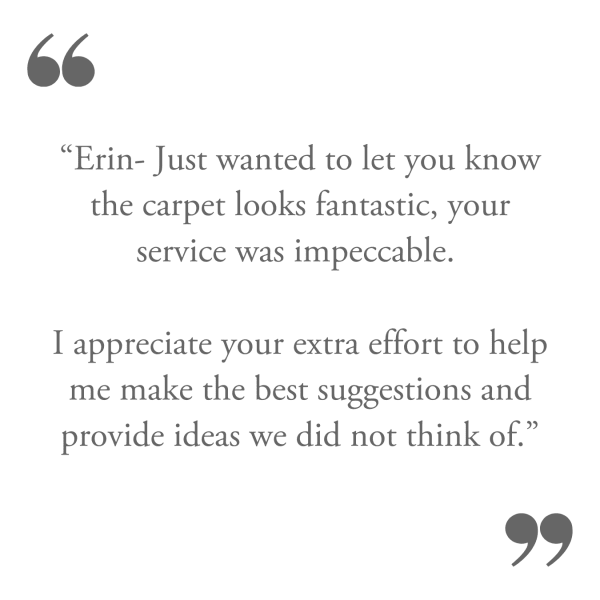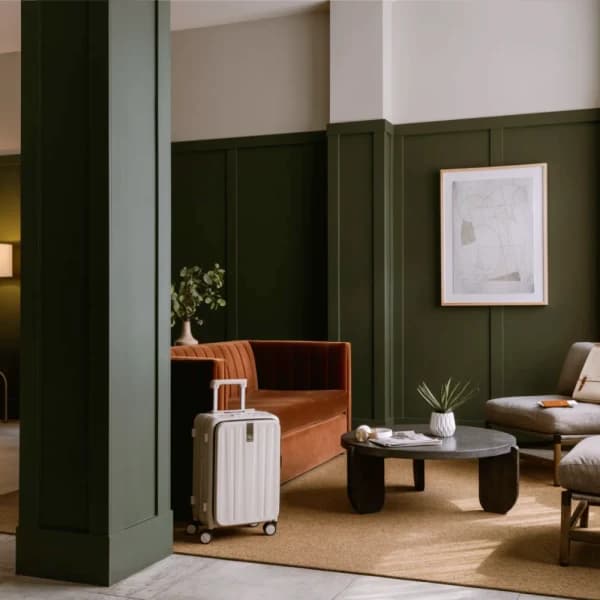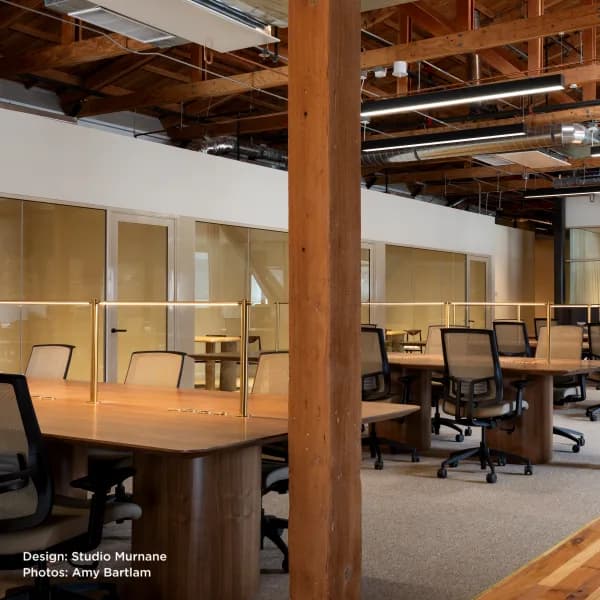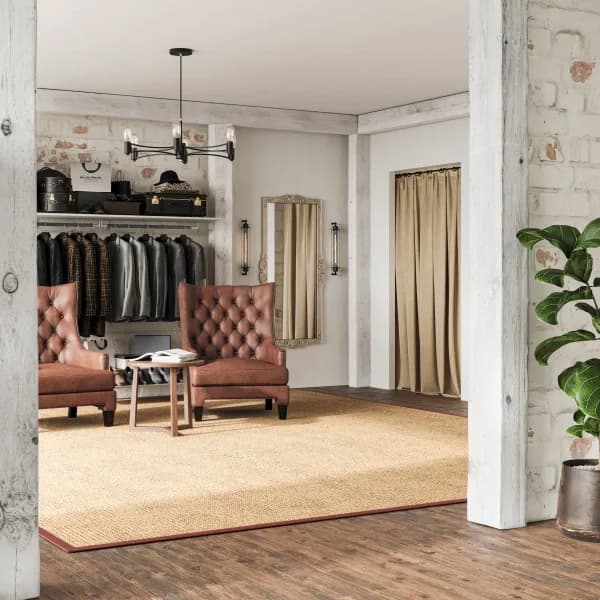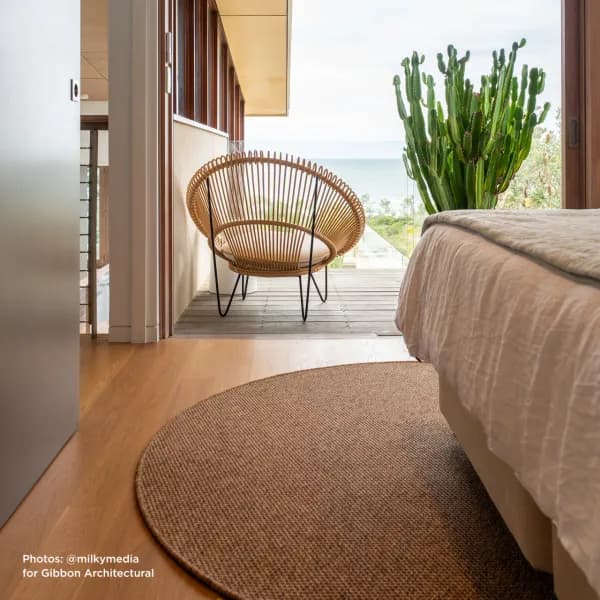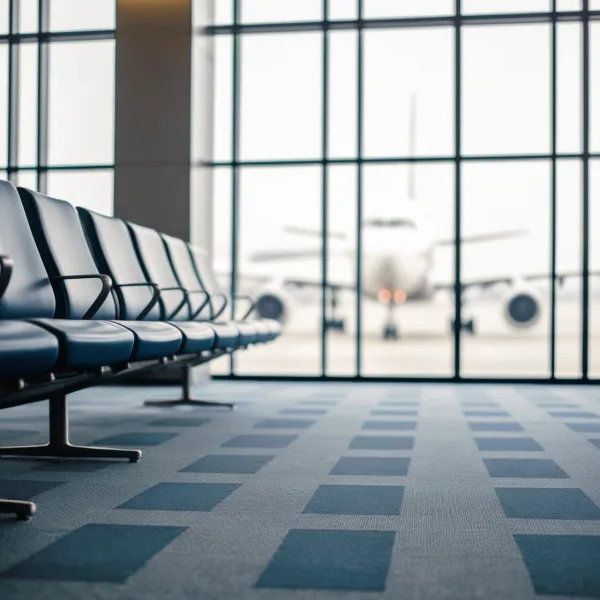Flatweave Rugs Guide
Flatweave rugs offer a sophisticated, low-profile look that complements a range of interiors, from traditional to minimalist styles. At Curran, our flatweave rug and carpet assortment combines this timeless aesthetic with enhanced performance features that go well beyond traditional flatweave styles.
Image: Terasa Collection
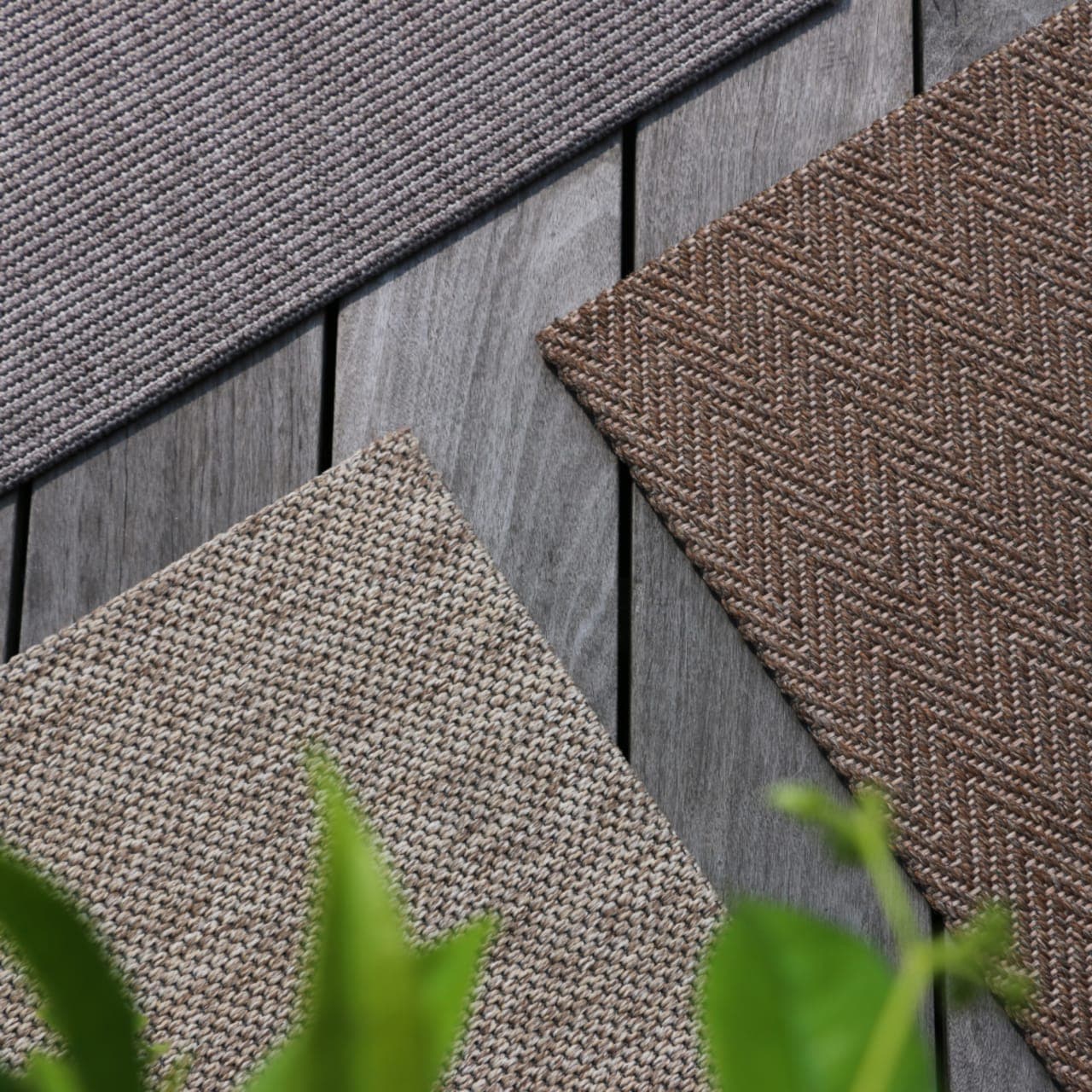
Table of Contents
If you are searching for a flatweave rug or exploring an alternative to plush pile options, this guide introduces you to the flatweave category and why our collection is uniquely suited for contemporary homes as well as contract spaces.
Flatweave rugs are crafted on a loom by interlacing horizontal (weft) and vertical (warp) yarns to create a tightly woven surface with a low pile height. No tufting, no knots. This results in a thin, flat texture that differs significantly from high-pile or plush rugs.
Traditional flatweave styles—like kilims, dhurries, and Scandinavian rollakans—are often colorful, reversible, woven from natural fibers, and do not have a backing. These heritage weaves are prized for their intricate patterns and lightweight construction.
Our collection represents a modern evolution of the flatweave rug—the same sleek aesthetic, in a variety of woven structures, and most are finished with a durable backing for stability and durability.
Some flatweave rugs do not have a backing. For example, many polypropylene rugs are flat woven and not backed. This style is ideal for residential outdoor use.
Natural fiber rugs like sisal or seagrass are flat woven and have a latex or jute backing. Most are great for busy residential spaces, while some like our SisalPLUS stain-resistant sisal collection are rated for contract use.
Lastly, there are many synthetic flat weave rugs that have a durable backing and a tight, flat surface, making them a great choice for busy households or commercial settings with heavy traffic.
Due to the backing, our rugs are not reversible like a flatweave kilim rug.
Our flatweave rugs are made using the following structure:
Warp and Weft Weaving: The core of every flatweave is the tight intersection of vertical (warp) and horizontal (weft) yarns.
Top Weave Pattern: The visible texture and design are created by how the yarns are interlaced—be it a bouclé loop, a chevron ridge, or a linear rib.
Fiber Composition: We use natural, renewable materials like sisal, wool, and jute as well as modern, innovative synthetic materials like rPET or ECONYL® (as seen in our proprietary SynSisal® collection).
Stabilizing Backing: Unlike traditional kilims, most of our rugs have integrated backings that enhance dimensional stability, resist curling, and increase longevity. Some styles carry contract-grade ratings—a testament to their durability.
These terms refer to the construction techniques used to make the rug—and they result in very different textures, appearances, and performance profiles.
Flatwoven
Construction: Made by interlacing warp (vertical) and weft (horizontal) yarns on a loom.
Surface: Flat and tightly woven with no raised pile.
Texture: Smooth or subtly textured, depending on the weave pattern (e.g., bouclé or herringbone).
Durability: Excellent dimensional stability when backed; less prone to shedding.
Best for: Minimalist aesthetics, layering, high-traffic areas, or under furniture.
All flatweave carpets and rugs are woven, but not all woven carpets and rugs are flatweaves. A woven carpet can have loops and/or cut piles. For example, the Jacaranda Collection highlights handwoven weaves with plush piles.
Tufted
Construction: Created by punching yarn into a fabric base (usually with a tufting gun), then applying a primary backing to hold the yarns in place.
Surface: Raised pile that can have a variety of finished pile styles, like loop, cut and loop, multilevel loop, or plush.
Texture: Soft, cushioned underfoot with more “loft” and plushness.
Durability: Can show wear more quickly in high-traffic areas; some styles shed over time.
Best for: Cozy spaces like bedrooms or lounges where softness is a priority.
In short, flatweaving creates a low-profile, woven surface with low to no pile, while tufting produces a soft, often thicker rug with a higher pile and looped or cut face yarns.
Flatwoven, Handwoven & Tufted | See the Difference
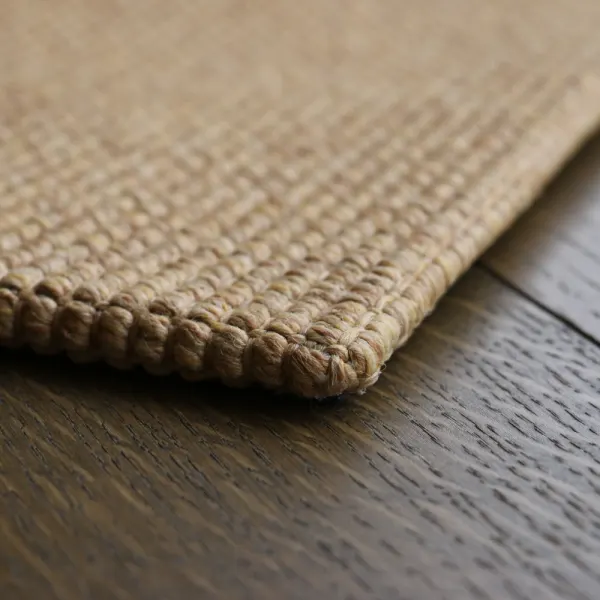
synthetic flatweave

natural flatweave
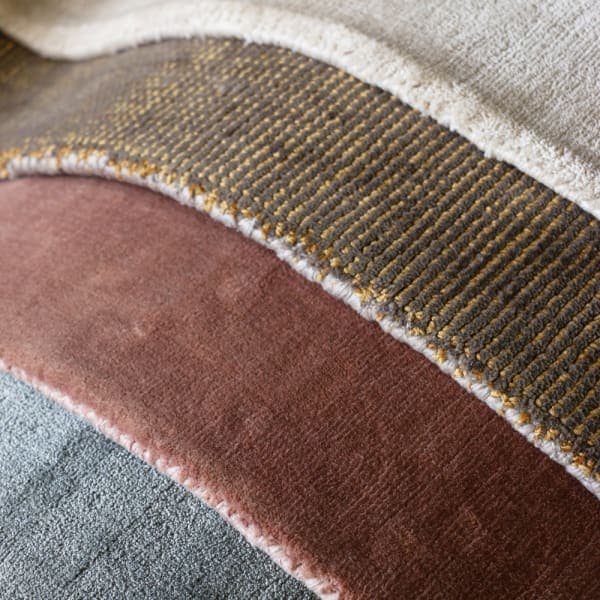
handwoven plush pile
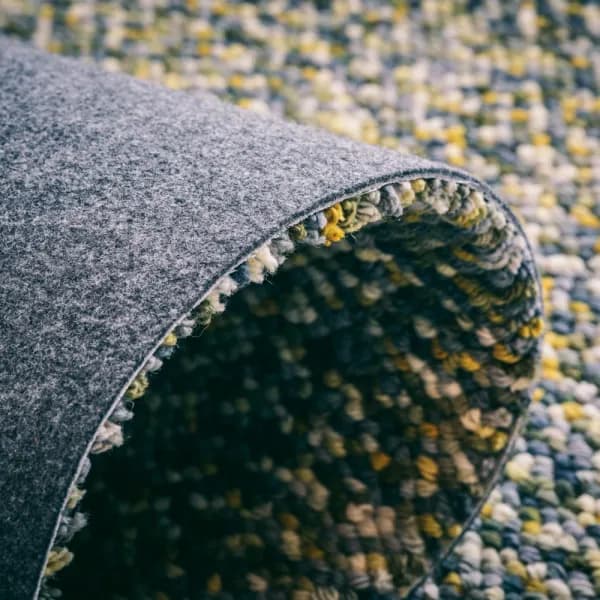
tufted loop pile
Sleek & Minimalist: Low profile and refined, flatweave rugs create a clean foundation for residential and commercial spaces alike.
Structured & Durable: Our backed flatweaves are more stable than traditional types and suitable for high-traffic areas, with many styles rated for contract use and commercial settings.
Natural & Modern: Woven from premium natural fibers like sisal, jute, seagrass, and wool as well as innovative, modern materials like polypropylene, ECONYL® and rPET.
Calm Colors: Neutral, earthy palettes that blend harmoniously with different design styles as well as color schemes.
Design Versatility: Choose from textural patterns like herringbone or basketweave to add subtle interest.
Perfect for Layering: Use a sisal flatweave underneath and layer a colorful kilim or plush rug on top for a curated look.
Less Cushioning: Flatweaves have a low-profile and a firmer feel underfoot than high-pile rugs. If you want thick, soft piles for an extra luxe feel, look for wools or a TENCEL™ carpet from Jacaranda. (If you do opt for a flatweave rug, a rug pad adds a layer of extra comfort)
Installation Complexity: Flatweaves create beautiful wall-to-wall installations, but installation can be complex—it requires a skilled installer. The non-stretch nature and backing make it more complex than tufted rug installation.
We offer detailed installation guidance with all our weaves, a comprehensive blog post entitled Flat Weave Carpet Installation—Everything You Need to Know, and videos to guide you.
Slippage Risk: On hard surfaces, a flatweave rug can move easily so a rug pad (see rug pads below) is recommended to prevent sliding, especially in open areas.
Flatweave rugs are known for their unique character, shaped by the materials used and traditional weaving techniques. Slight irregularities in texture, color, or weave are not flaws, but part of what makes each rug one-of-a-kind and beautifully authentic.
Natural Irregularities: Variations in weave, shading, loop size, and rib spacing are expected and give flatweave rugs their distinctive, handcrafted character.
Visible Fibers: Elements like sprouts (loose or frayed yarns) and plugs (tied-off fibers) may appear and can be trimmed without damaging the weave.
Color Variance: Differences in dye lots, fiber origin, and exposure to sunlight can create visible shifts in color or striation over time.
Movement & Flexibility: Natural and synthetic fibers expand and contract with humidity and temperature, making acclimation before installation essential.
Material-Specific Traits: Shedding, foreign yarns, and bowing (up to industry-accepted levels) are all normal due to the nature of the fibers and weaving process.
Do I need a rug pad with a flatweave rug?
Yes, a rug pad is strongly recommended. Because flatweaves are typically thin and lightweight, they can slide or curl, causing a tripping hazard. A rug pad keeps your rug in place, adds comfort underfoot, and protects both your rug and your floors.
Please note: rug pad options vary by weave and not all options are available for every weave.
Wall-to-Wall Installations: If you're installing your flatweave rug as wall-to-wall carpeting, your installer will typically supply and install the appropriate underlay—no separate rug pad purchase is needed.
How to Choose the Right Rug Pad for Your Flatweave
We offer several types of rug pads, each suited for different placements and preferences.
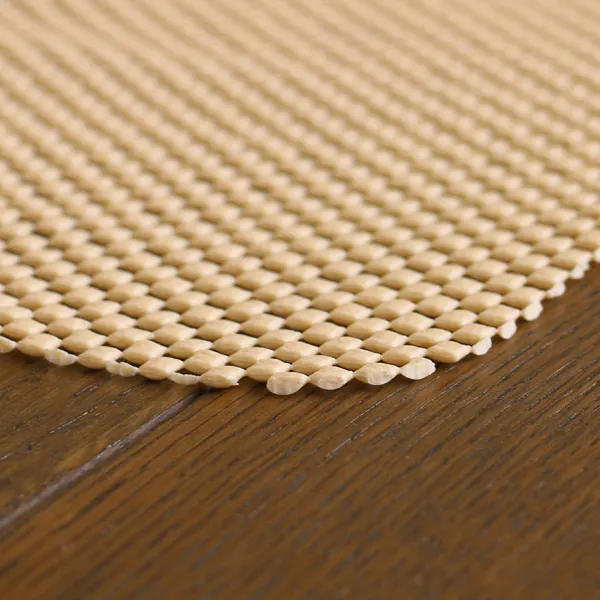
Thin, Non-slip
Ideal for high-traffic areas like entryways, hallways, kitchens and outdoor spaces. These low-profile pads grip the floor and keep area rugs securely in place—without adding bulk or raising the rug’s edges. For outdoor rugs, this thin, non-slip option is easy to clean, adds cushioning, and stabilizes the area rug.
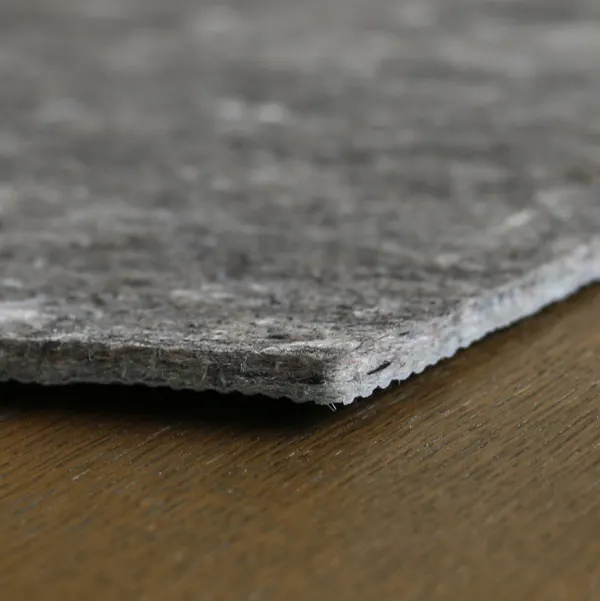
Reversible
Great for living rooms, bedrooms, or areas where extra comfort is welcome. These pads have a felted layer and a rubber side. The felted layer adds cushioning and the rubber provides a grip on smooth floors. Different thicknesses are available and the reversible option gives you flexibility (it can be used on both a hard surface floor or on carpet, for example).

Attached
An attached rug pad is an option for many of our flatweave area rugs. Attached rug pads provide additional dimensional support and stability. The attached pad is either a non-slip, rubber backing or a felted backing. Select weaves that have the Infinity Edge border option are required to have an attached rug pad.
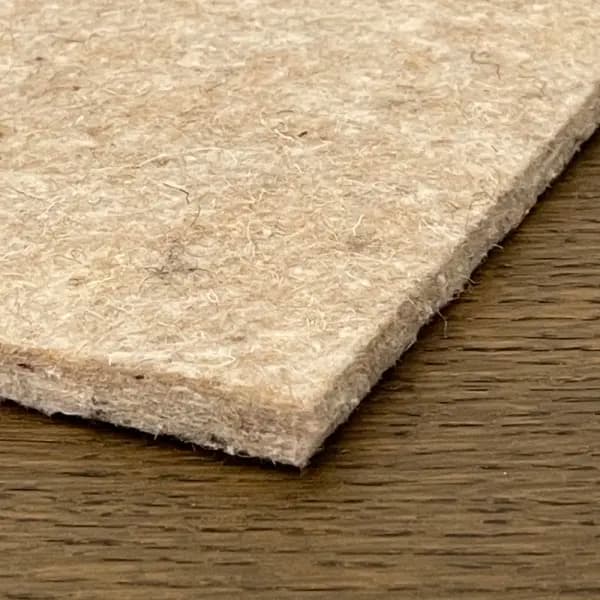
Thick Underlay
Best for larger rugs in low-traffic areas where extra softness is a priority—like under a bed or in a cozy den. These pads provide a plush feel but may not be the best choice if you want the rug to lie very flat or if door clearance is an issue. Furthermore, a thick rug pad or underlay must be anchored by heavy furniture for stability and safety.
A flatweave rug from Curran and sisalcarpet.com offers the best of both worlds: the elegant, minimalist look of classic flatwoven textiles with the structural integrity needed for modern living.
Many of our flatweaves are available in custom sizes, shapes, and even stair runners—making them flexible for every type of space, from residential retreats to high-traffic lobbies. Explore our flatweave options below, from the natural beauty of sisal to the performance materials in synthetic sisal:
Shop Synthetic Sisal Flatweave Rugs
Shop EarthSISAL™: Our most sustainable flatweave option, ideal for green-minded interiors.
Naturally Beautiful Performance Flooring
With over 30 years of experience and hundreds of successful projects, our business is built to meet the needs of interior designers, architects, procurers, & installers.
